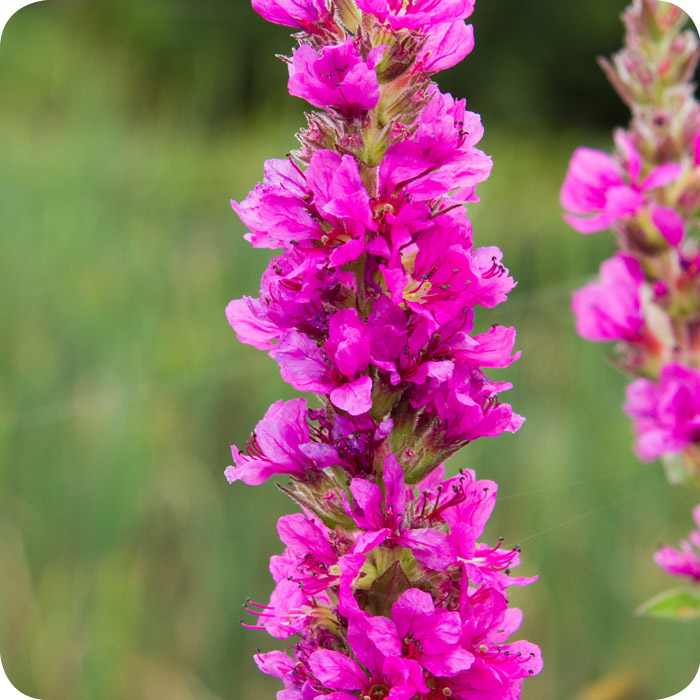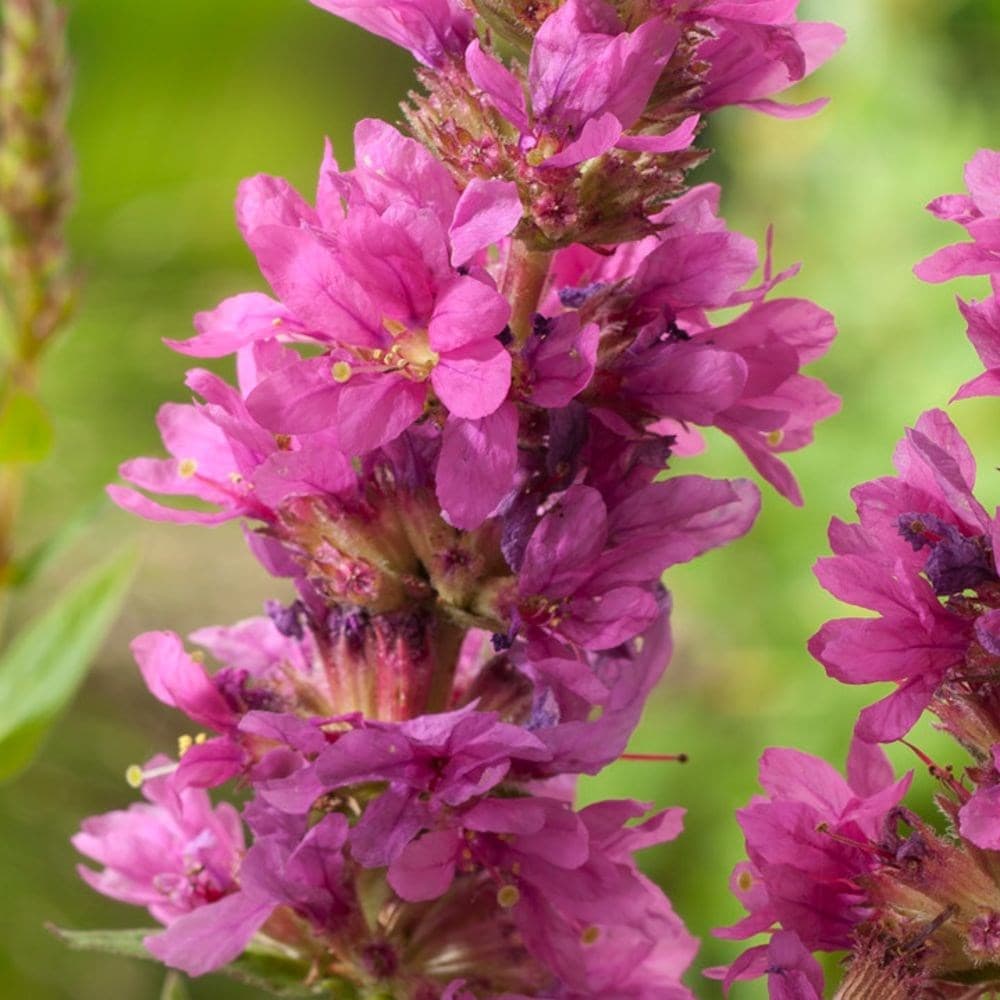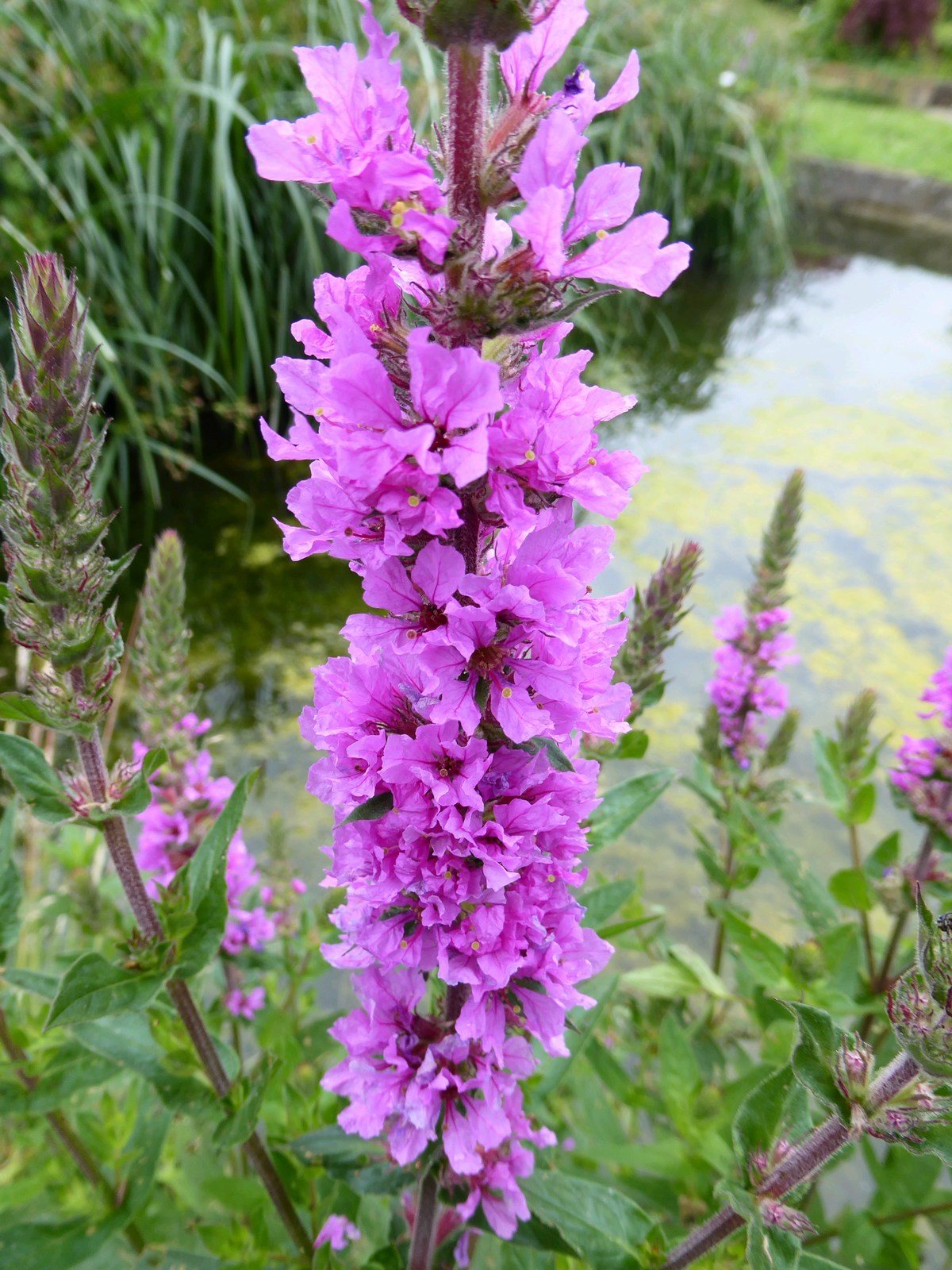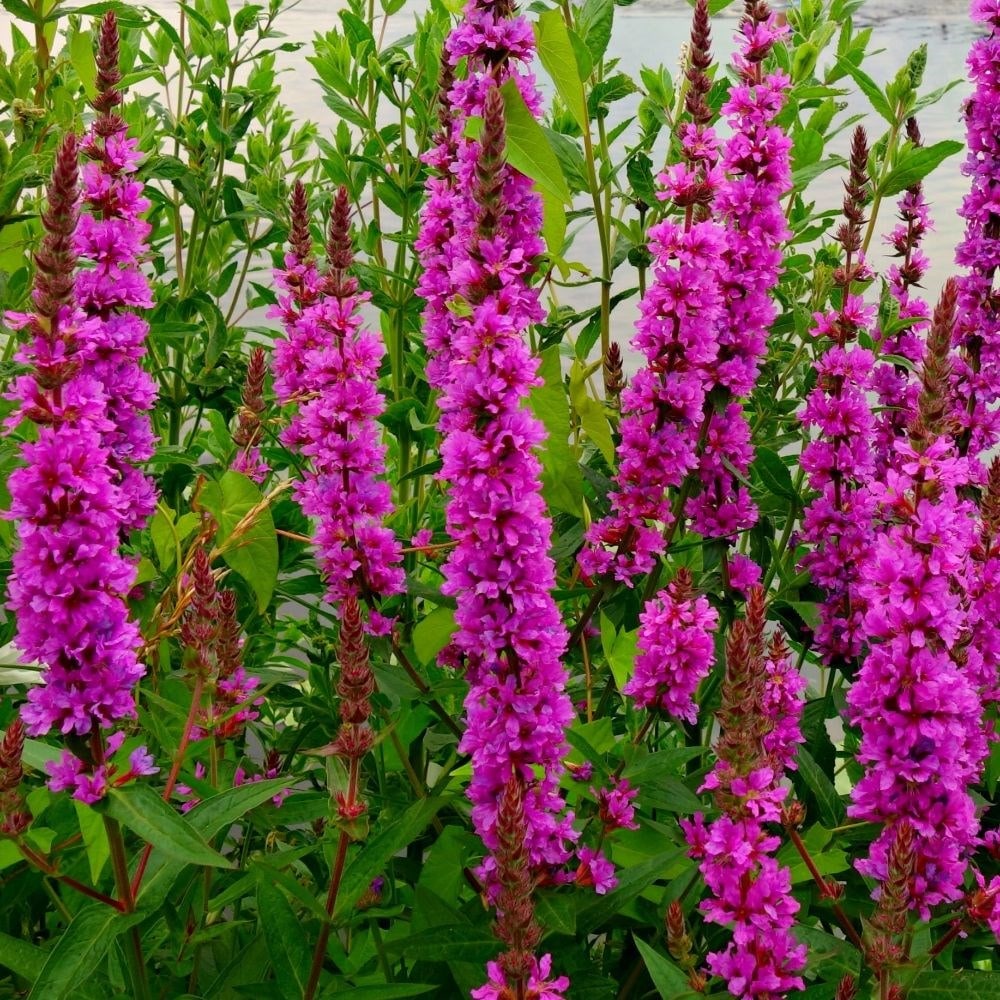
Purpleloosestrife (Lythrum salicaria) Plantlife Shop
Purple loosestrife, Lythrum salicaria, is a tall-growing wildflower that grows naturally on banks of streams and around ponds. It has strong, upright stems, topped in summer with long, poker-like heads of bright purple-red flowers. Its flowers are extremely attractive to bees and butterflies.

PlantFiles Pictures Purple Loosestrife (Lythrum salicaria) by Equilibrium
Description Purple loosestrife has evolved to tolerate the shorter growing season and colder weather of the central and northern parts of the provinces. Plants in northern regions are smaller and flower earlier than those in southern regions.

FileLythrum salicaria, purple loosestrife 5.jpg
Scientific Name Lythrum salicaria L. ( ITIS) Common Name Purple loosestrife, spiked loosestrife Native To Eurasia ( Munger 2002) Date of U.S. Introduction Exact date unknown; was established by the 1830s ( Munger 2002) Means of Introduction Through ships' ballast and as an ornamental ( Munger 2002) Impact Crowds out native species ( Munger 2002)

Purple Loosestrife (Lythrum salicaria) plug plants Cumbria Wildflowers
Purple loosestrife, Lythrum salicaria, is a tall-growing hardy herbaceous perennial, native to the the British Isles. It thrives in moist soil or in the shallow water at pond margins. Upright stems are clothed with slender light green leaves and topped with long spires made up of numerous rosy-mauve flowers through summer.

Lythrum Salicaria Purple · Free photo on Pixabay
Purple loosestrife is a perennial weed in the Lythraceae (loosestrife) family native to Africa and Eurasia. Commonily found growing in waste areas, roadsides, and sites with wet soil conditions. The plant will grow from 2 to 6 feet tall Very tolerant of wet sites and full sun.

Buy purple loosestrife Lythrum salicaria Delivery by Waitrose Garden
Lythrum salicaria or purple loosestrife [2] is a flowering plant belonging to the family Lythraceae. It should not be confused with other plants sharing the name loosestrife that are members of the family Primulaceae. Other names include spiked loosestrife and purple Lythrum.

Buy Purple Loosestrife Lythrum salicaria Native Wildflowers Sarah Raven
Purple Loosestrife is one of several invasive species with biocontrols: 3 beetles that feed on leaves, flowers or root systems, all of which can impede seed production. The hope of biocontrols may be eradication, but the more realistic goal is to significantly reduce populations and subsequently reduce the impact on native wetland flora and fauna.

Lythrum salicaria (Purple Loosestrife) Minnesota Wildflowers
Spectacular when in full bloom, Purple Loosestrife (Lythrum salicaria) is a vigorous, upright perennial enjoying an extremely long bloom season from early to late summer. It features pink, purple, or magenta flowers in dense spikes, up to 18 in. long (45 cm) held atop lance-shaped leaves.

Purple Loosestrife (lythrum Salicaria) Photograph by Bob Gibbons
Purple loosestrife is a perennial plant found rooted in a range of wet soil habitats. It can grow in a couple feet of water or on dry shore near the water line. It is commonly found in roadside ditches. Plants range from two to six feet tall, with several half to one foot long flower stalks on a single plant.

Purple Loosestrife (Lythrum salicaria) Purple Loosestrife, Whorl, Downy, Small Leaf, Wetland
Lythrum salicaria. An attractive but invasive perennial, purple loosestrife has become established in a wide range of habitats including river banks, lake and pond shores, irrigation ditches and roadsides. Plants grow in clumps. Mature plants can have 30 to 50 stems growing from a single rootstock. Flowers are showy and vibrant.

Buy purple loosestrife Lythrum salicaria
L. salicaria is a robust herbaceous perennial with upright stems to 1.2m tall, clad in narrow, willowy leaves, and small vivid purplish-pink flowers 2cm wide in dense terminal spikes over a long period in summer Other common names black blood long purples see more purple grass Synonyms Lythrum salicaria var. gracile Join the RHS today and save 25%

Lythrum salicaria Purple loosestrife Artisan Aquatics
Lythrum salicaria, commonly called purple loosestrife, is a clump-forming wetland perennial that is native to Europe and Asia. It is believed to have been first introduced into the U.S. from seed contained in ships' ballast, and it became established in certain estuaries in the northeastern states by the early 1800s.

purple loosestrife (Lythrum salicaria)
Purple loosestrife can usually be found close to freshwater areas, such as riverbanks, marshlands, bogs, and canals. W. Bulach, CC BY-SA 4.0, via Wikimedia Commons. Lythrum salicaria is a hardy, herbaceous perennial native to Eurasia and the British Isles. Most commonly named purple loosestrife, L. salicaria is also known colloquially as long purples, purple grass, rainbow weed, rose.

purple loosestrife (Lythrum salicaria)
A very aggressive invader of sunny wetlands, purple loosestrife displaces native species and reduces plant and animal diversity. Don't let the attractive persistent flowers fool you--this one is not an asset to New England. Habitat

None1 LTR Lythrum salicaria Purple Loosestrife
Purple loosestrife is an erect perennial herb that usually grows two to six feet tall. A mature plant can develop into a large clump of stems up to five feet in diameter. Each stem is four- to six-sided. The root system consists of a very thick and hard taproot, and spreading lateral roots.

Lythrum salicaria Purple Loosestrife Aquatic Plants from Mr Fothergill's Seeds and Plants
Lythrum salicaria L. purple loosestrife. Invasive Information; This plant can be weedy or invasive according to the authoritative sources noted below. This plant may be known by one or more common names in different places, and some are listed above. Click on an acronym to view each weed list, or click here for a composite list of Weeds of the U.S.